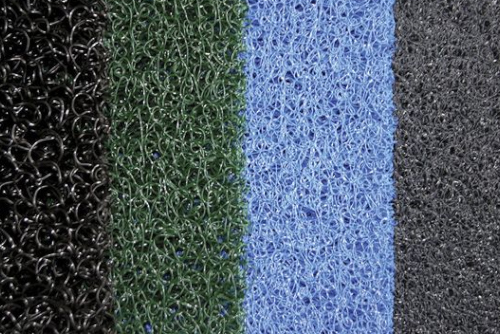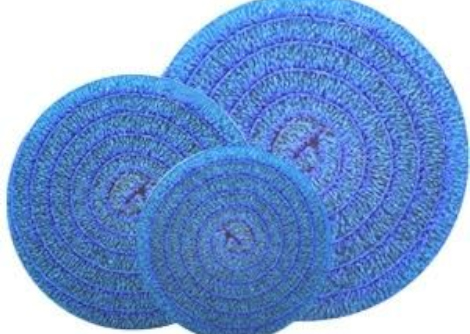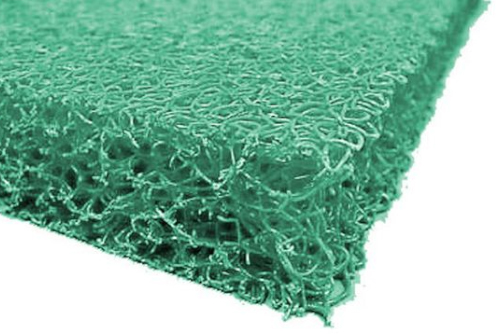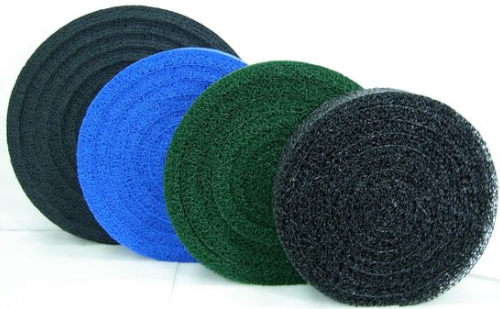
Pond filtration is a complicated process, but it is essential for maintaining a clean and regulated ecology. It’s a procedure that may be fine-tuned with high-quality media and enhanced with the inclusion of the second stage of filtration, known as chemical filtration, that isn’t typically included with filters.
If you have to change your old filter media or are dissatisfied with your current filtering results, there are several ways to increase the performance of your filter by improving each step of the procedure.
Here is a list top pond filter media supplier you must know:

Explore their extensive collection of pond filter media bulk and pump accessories for better pond filtering and fish wellness.
Products and Services Offered:
Mountain tree, with its inventive capability, endorses aquacultural item vendors, fish tank wholesalers, and project contractors, by providing filter media and pond equipment, as well as filtration solutions, to help you grow your enterprise and gain a competitive advantage.

The Emaux Biological Filtration System is eco-friendly and provides excellent filtration and backwashing. It solves the aggregation issues that plague ordinary sand tanks. It not only has a beautiful and modern look, but it also has a smaller filtering system than the conventional one.

For more than a decade, Americo has been one of the leading suppliers of nonwoven biological and mechanical filter media for the fish and aquaculture industries.
Their Poly-Flo filter material, which is used in pond and aquarium skimming, waterfall, and aquarium systems, is critical to maintaining a balanced habitat.
Poly-Flo Biological Filter Media is intended to provide a large surface area for good bacterial growth, prevent blockage and channeling, and be resilient, long-lasting, and UV resilient.
Their mechanical filter medium traps waste while yet enabling a large amount of water to pass through. An impartial bioassay lab tests their item to ensure that it is not hazardous to fish.

Pall’s Supralon filter components, intended for usage in current Pall Lube and Hydraulic filter applications, combine the finest attributes, giving clients convenient access to the appropriate product for every application’s demand.
Supralon long-life filters’ high efficiency and constant performance allow clients to quickly reach and sustain needed purity levels, protecting lubricant and hydraulic systems from equipment damage and unplanned downtime, which can cost a lot.

Matala is a new generation of pond filter manufacturers that is quickly gaining traction in the industry. Matala is the best solution for your needs because of its numerous benefits.
Matala is composed of curly fiber Thermo-Polypropylene Compounds (TPPC) or Thermo-polyethylene Compounds (TPEC) that are layered and shaped into various thicknesses.
The formation of the filter media, their particular area, volume, and rigidity will be determined by the TPPC formula and the thickness of the fiber utilized.

The following are some of the advantages of using high-quality filter media:
Some materials and designs are significantly better suited than others, so not all filter media are made equal. Most filter purchases include relatively basic filter material that does its major role but isn’t the finest in its class. You can get yours from the leading filter mat supplier.
Fortunately, upgrading filter media is frequently as simple as reducing mechanical media to size and putting the necessary amount of bio-filtration to your filter box.

Because high-quality mechanical filter media is built to last, it is not always necessary to change it until it is ripped or degraded. Bio-balls, for example, are biological filter media. You do not need to change these until they get ruined. Most of the filter media will survive a long time if you keep up with washing and upkeep.
That being said, if you see your filter media is beginning to deteriorate, it may be necessary to change it. Even with adequate cleaning, mechanical filter media that is decreasing in grade will get blocked quicker and quicker.
Bio-media that needs to be replaced is more difficult to spot, but if you observe a rise in waste or odor surrounding your pond, it could be due to a lack of helpful bacteria in your bio-media as the material degrades. You can change the media and supplement with a strong helpful bacteria supplement to boost your good bacteria counts.
This does have to be changed in terms of chemical filtration and activated carbon. We normally recommend replenishing the carbon every 3-4 weeks for optimal advantages, based on the number of fish, excrement, and sludge in your pond. After your pond has been cleaned up, you can reduce this to every two months and assess the outputs. You can also get pond filter brushes wholesale to make your task easier.

Mechanical filter media can be made of any material that eliminates dissolved particles from pond water, however, it is most commonly found in the type of sponge, foam, brushes, matting, and polishing pads.
There is no such thing as the material that is best always because each is meant to remove waste, and they all do so pretty effectively.
As a result, we prefer foam for most filters because it’s flexible, easy to find and generally comes in a variety of sizes for maximum waste absorption. The majority of foam-style mechanical media is composed of high-quality polyurethane, which is an elastic and durable material while you can also check pond filter material bulk in cost-effective options.
The thicker the optical media, the longer it will take for water and dirt to travel across. Thicker media allows for improved purification and dirt elimination, but it can also lead to increased pressure inside your filter.
Thicker media can impede water flow, which can lower oxygen levels in your pond, based on how coarse it is.
Although each type of media is unique, we suggest media with a thickness of 1-2 inches for the majority of applications. This must offer good filtration performance while not interfering with water flow too much.
It’s best to have at least two layers of mechanical media, with one being coarse for bigger debris clearance and the other being much smoother for small particle elimination.
It’s best to layer these with the coarser on the base and the thinner on top so the tiny substances do not get blocked right away.
Pressurized filters will accommodate numerous layers of media, allowing you to experiment with different sizes to determine what works best for your pond.
Biological filter media is created from a variety of materials, but they’re all designed to give helpful bacteria the most surface area possible to thrive on. The entire specific surface area (SSA) of the medium is more significant than the material because the larger the surface area, the more bacteria may flourish and the finer the filtering would be.
If you have a low-surface-area filter medium, you may get to put extra to it if you have a number of fishes and debris accumulation. It’s generally simpler to choose a high-surface-area grade bio-media so you can use less while still getting good biological filtration.
One factor to explore is if the media in the filtration box is free-moving. Some biological filter media, such as foam or matting, are absolutely static when compared to the water flow of your unit.
The issue is that dead bacteria accumulate gradually and are not properly eliminated from the media unless manually cleaned. The little biological filtration that can go into effect, the many dead bacteria there are.
Each bio-media is often intended to be slightly buoyant, allowing it to flow over in your filter box as water passes across. The medium moves spontaneously and self-cleans as a result of the turbulent motion from your pump, eliminating dead bacteria and allowing new bacteria to develop.
Activated carbon is great for removing organic contaminants from your pond water and is absolutely safe for your fish. If you’re looking for a chemical filter media, be sure it’s activated carbon-based for the best outcomes and peace of mind.
The most crucial factor to consider when choosing an activated carbon-based item is the carbon’s surface area. The greater the surface area, or openness, the greater the chemical filtering potential. A few of the finest carbon filter media are porous, enabling water to infiltrate through the surface and encounter as much activated carbon as possible.
There are numerous pond filter media suppliers and a variety of options you can choose from. You can choose the finest based on your requirements and also get customizable options for bulk purchases to grow your business.
Leave a Reply